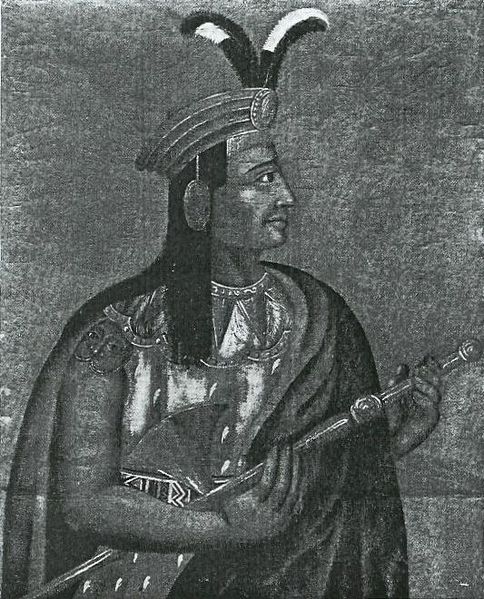*Image Credit: Wikimedia Commons The day after one of his men told Inca Emperor Atahualpa the Spanish had arrived in peace, Francisco Pizarro captured the native leader on November 16, 1532 in the town of Cajamarca, Peru. Arriving in the agreed-upon square with 7,000 lightly-armed men and servants, Atahualpa refused to take orders from King Charles I, prompting the Pizarro’s men to unleash an ambush and overpower the Inca. The fall of the empire would soon follow. Word of the conquistadors had traveled through much of South America by the time Pizarro’s men reached the Peruvian coast in 1532. Hernan Cortes’s slaughter of the Aztecs several thousand miles to the north the decade before revealed the character of the Europeans, so far as Atahualpa was concerned. In the midst of a civil war with armies led by his brother Huascar, the Inca Emperor had other things to focus on. After securing victory at the Battle of Quipaipan in late April, Atahualpa had solidified his position on the throne and turned to face the threat posed by the Spanish. Pizarro, for his part, was hoping to seize upon the divided nation as a means to conquer the natives with less effort. Arriving in Tumbes, he hoped to advance with the 170 soldiers under his command, taking advantage of technological advances to claim lands for the Spanish monarchy. When an Inca courtier arrived as part of a welcoming party, Pizarro and his men received Atahualpa’s request for a meeting. Observing the weaponry and horses — a strange sight to the emissary — the Inca returned to his emperor with a detailed report. Hearing of the relatively small numbers, Atahualpa found himself confident he could ensnare the invaders without much trouble. Waiting near Cajamarca, where his army had been resting for weeks after the triumph at Quipaipan, Atahualpa allowed the Spanish to move up the trail without facing attacks from his soldiers. Pizarro sent Hernando De Soto, Friar Vicente de Valverde and a small group of men to make first contact and extend an offer to gather together in the city. Atahualpa accepted, promising to arrive the following day. Hoping to convince the Inca Emperor to surrender peacefully, the Spanish leader still organized his men for an attack. Early in the afternoon of November 16, 1532, Atahualpa followed a long procession of his men — warriors in fine dress with weapons hid beneath their clothes — through the jungle and into the center of Cajamarca. Upon reaching the square, he found no one. Valverde came out with an interpreter, offering Atahualpa a seat at the table with Pizarro for a feast and negotiations. When the emperor instead demanded the return of treasures stolen by the Spanish, the priest answered by describing the Catholic faith. The fateful moment arrived when Atahualpa received a copy of the Bible from Valverde. Taking it in his hand after being told he could hear God, the Inca shook the book to listen for a sound — he had never seen such an object before. Hearing nothing, he threw it on the ground. Distressed, Valverde ran back to Pizarro, who launched the onslaught. Spanish soldiers, sweeping down out of the hills firing rifles and cannons, scattered the terrified Inca warriors. Those who were not killed fled into the mountains. Atahualpa’s servants, attempting to carry their leader to safety, fought through severe wounds in attempt to defend him. As the Spanish advanced on the procession in an attempt to kill the Inca Emperor, Pizarro intervened to take him hostage. Nearly a year later, after Atahualpa filled a room with gold and silver to ransom himself, Pizarro had the native leader executed on August 29, 1533. Also On This Day: 534 – The final Codex Justinianus is completed, later serving as law for church and private proceedings 1272 – King Henry III of England dies while is son, Edward I, is away for the Ninth Crusade 1849 – Fyodor Dostoevksy is sentenced to death for anti-government activities, though he later serves in a work camp instead 1852 – English astronomer John Russell Hind discovers 22 Kalliope, an asteroid 1938 – Hallucinogenic drug LSD is synthesized by Swiss chemist Dr. Albert Hofmann
November 16 1532 CE – Francisco Pizarro Captures the Inca Emperor Atahualpa
*Image Credit: Wikimedia Commons The day after one of his men told Inca Emperor Atahualpa the Spanish had arrived in peace, Francisco Pizarro captured the native leader on November 16,…
587
